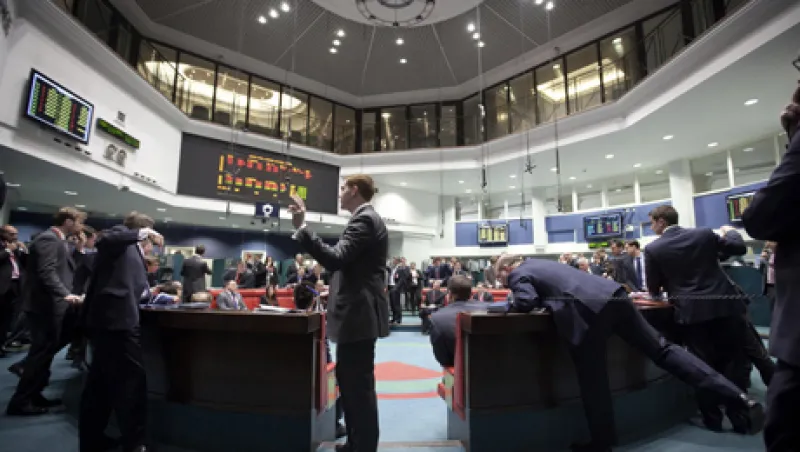With near-total unanimity, shareholders of the venerable London Metal Exchange voted on Wednesday to sell the company to Hong Kong Exchanges & Clearing for £1.39 billion ($2.2 billion) in cash.
The vote marks the end of an era for the historic exchange. Founded 135 years ago above a London hat shop, the LME, which now occupies an imposing landmark building on Leadenhall Street, was one of the few remaining exchanges in the world owned by its members. It is also one of the few exchanges that, in addition to offering electronic trading through its LMEselect platform, still relies heavily on an open outcry system, in which traders take to the company’s circular trading floor (known as the ring) to conduct business.
The sale was approved by 95.5 percent of the LME’s shareholders at an extraordinary general meeting on July 25. Only 4.5 percent of the shareholders present voted against it. The overwhelming support for the sale handily exceeded the threshold of 50 percent of shareholders required to ratify the deal, and the number of ordinary shares cast in its favor — some 99.2 percent — far exceeded the 75 percent voting threshold. CEO Martin Abbott was clearly pleased with the turnout and the result.
“I am delighted that our shareholders have overwhelmingly supported the board’s recommendation,” he said in a statement released on the day of the vote. “The deal with HKEx, Asia’s leading exchange, will secure the LME’s position as the world’s foremost metals trading venue.”
The sale, which is expected to close in the fourth quarter of 2012 pending regulatory approval, will bring together the LME, the dominant player in global derivatives trading in industrial metals, with HKEx, a successful regional exchange group with the capability of providing the LME with greater access to Chinese markets. That access will become crucial in years ahead, particularly since the LME’s chief rival in the region, the Shanghai Futures Exchange, is gaining strength.
“The biggest threat to the LME’s dominant position is Shanghai [Futures Exchange],” says Richard Perrott, a London-based analyst who covers diversified financials for Hamburg-based Berenberg Bank. “The Shanghai exchange has just started posting some material volumes in certain products, like copper and zinc derivatives, and the LME needs to have a material position in China or else it risks losing market share.”
The deal will also allow the LME to gain from HKEx’s expertise in clearing. In an announcement last December, the LME revealed that it planned to create its own clearinghouse, rather than rely on LCH.Clearnet, which it has used since 1987. In the announcement of the tie-up with HKEx in June, the LME made plain that HKEx would support the development of LME’s own clearinghouse, LME Clear, which should allow the exchange to launch new products and services more readily.
HKEx, for its part, gains a powerful new asset. Although the LME had a disappointing year financially, and saw its pre-tax profits decline 8.7 percent to £11.4 million in 2011, trading volumes soared by 21.9 percent year over year to 146.6 million lots. The exchange also posted record trade value in 2011, which increased by 32.8 percent year over year to $15.4 trillion. Perrott expects to see continued growth in the LME’s trading of metals derivatives based on the increasing adoption of electronic trading and rising demand from Asian economies, putting the projected rise in the number of contracts traded at 15 percent for 2012.






